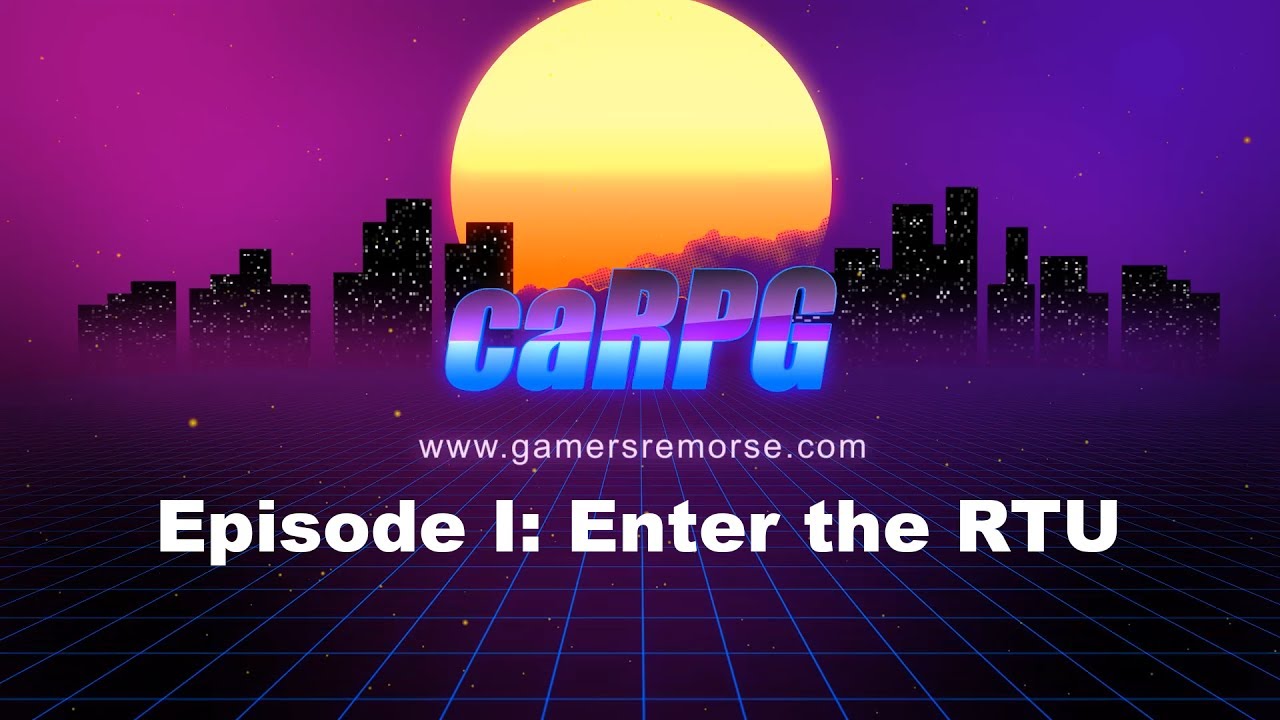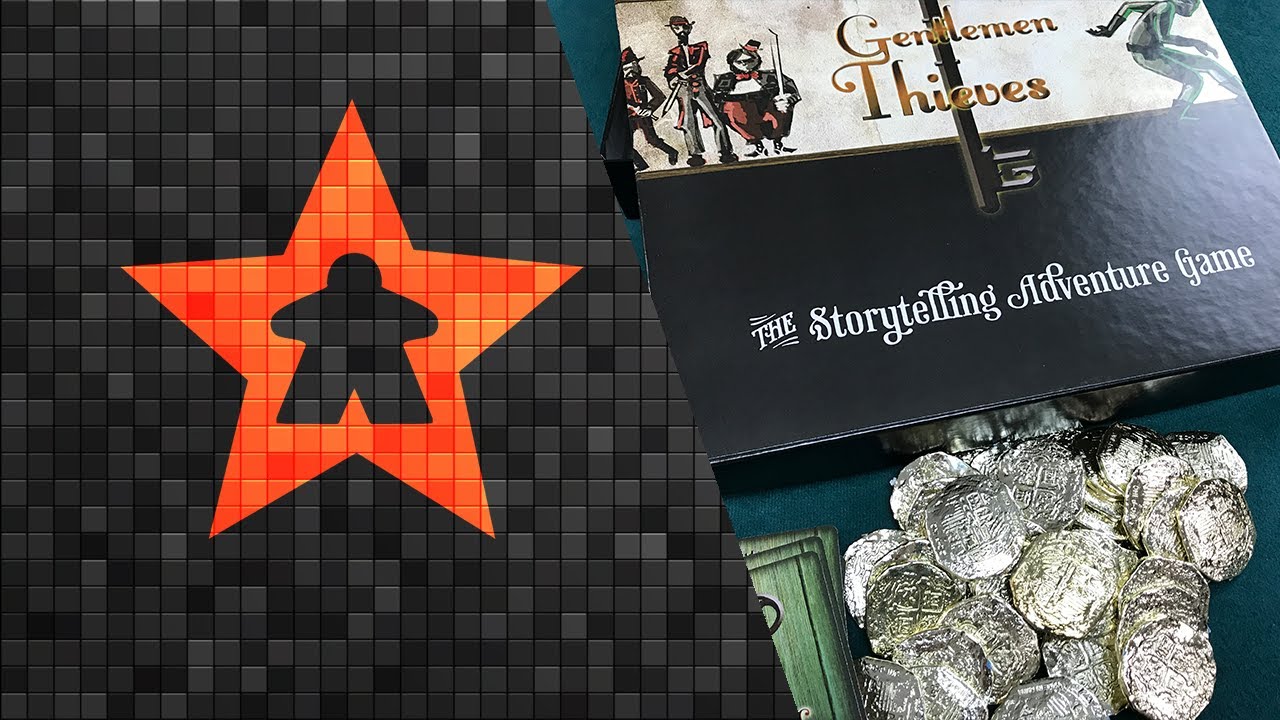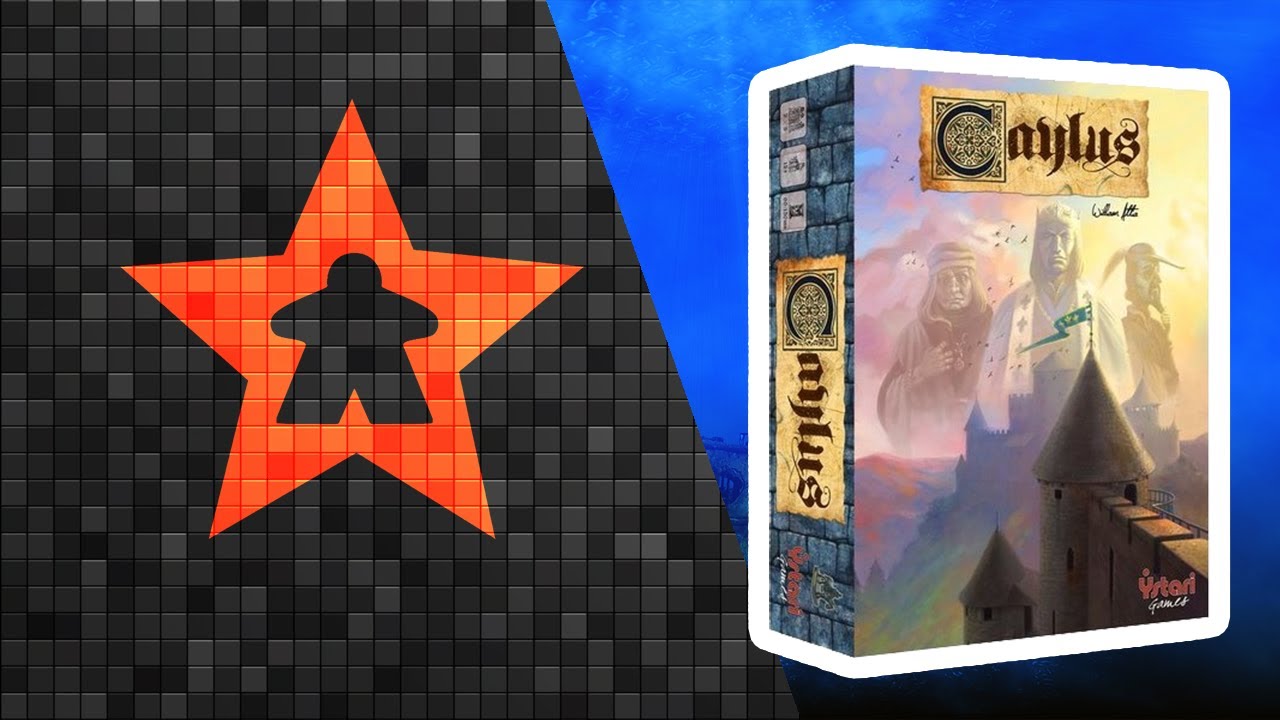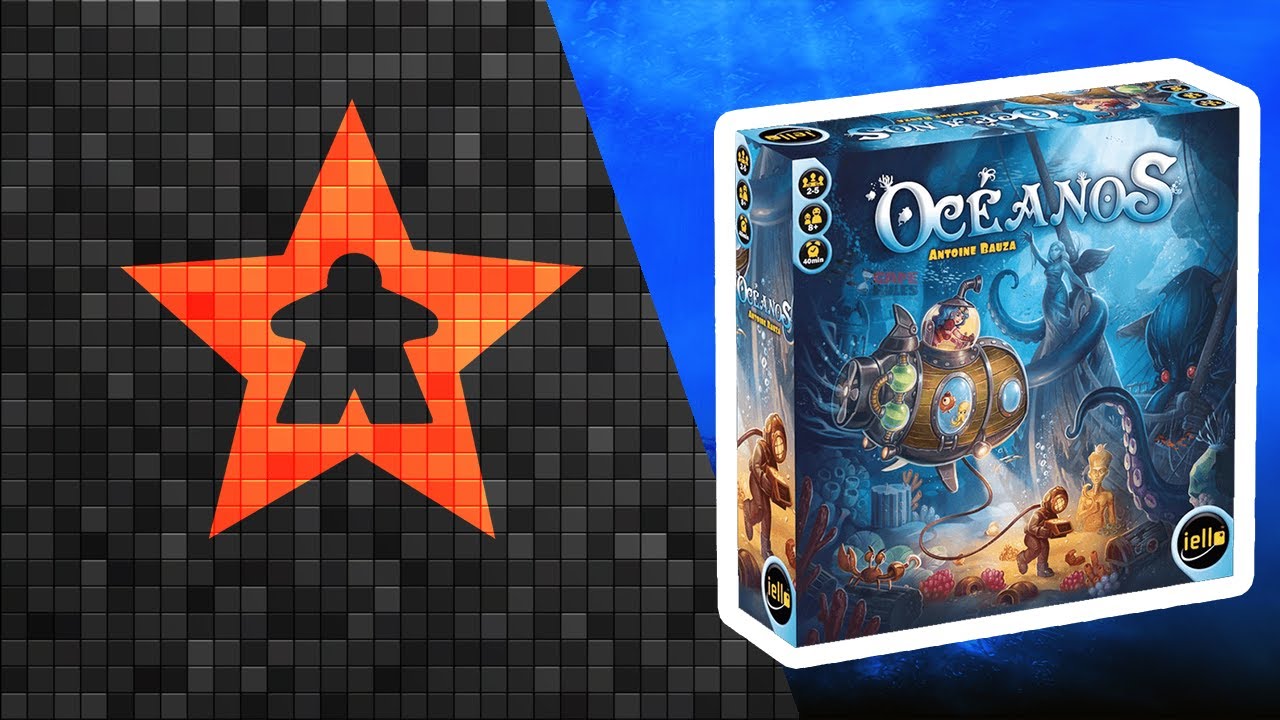Gamers Remorse Episode 138: caRPG Special – Enter The RTU


In the last year we have seen a huge deluge of games dealing with area control. And Area Control isn’t even that sexy of a board game mechanic, so it got me thinking ‘Why’? Perhaps it was the challenge or perhaps it was a hearkening back to a time when gamers interacted with other gamers. This lead to me to pondering about changing dynamics in gaming trends due to previous years efforts. There was certainly a connection between the two, however, instead of continuing my diatribe I will let you, the reader, connect the dots. Instead I thought it would be much more fun to look at the top games from each year in the last decade to try to summarize what sort of game that year brought. So without further adieu… let’s take a look!
The year began with hits like Clank! and Gloomhaven! and continue even now. The games are numerous and some of them I have been following through development like Greenbrier Games’ Folklore: The Affliction. Other notables include:
Sure, there were other games like Roll Player and Sagrada that mark this year with great gameplay, but without a doubt Dungeon Crawling has reached a pinnacle this year.
Without a doubt, this was the year of area control if there ever was one. The first game I took note of in 2016 that was an area control game was Scythe. It was an interesting mix of agrarian resource management and freaking Mechs! It was heavily anticipated and folks were following it well before it was ready for Kickstarter. But the Kickstarter just blew up! Speaking of Kickstarter campaigns, Blood Rage! Good Lord. That game took Kickstarter by storm and is likely one of the crowning reasons why the designer, Eric Lang is now the lead designer at Cool Mini or Not. But Blood Rage and Scythe weren’t the only reasons, Ignacy (and Portal Games) had Cry Havoc, and El Grande was republished this year. Other notables include:
What an epic line up! And that’s coming from a guy that doesn’t love the Area Control mechanic.
This year was tough to call. There were many notable games and many notable mechanics at play, however, none of them reached the same level of popularity as the Legacy mechanic. It was all anyone was talking about back in 2015. For this I include Pandemic Legacy as the most obvious example, but others included the Time Stories games. Although Time Stories isn’t a true Legacy game, one could argue that it shares many of the same traits in regards to its shelf life as well as replay-ability and elements that are carried over from one game to another (spoilers!).
Sure, I cheated a little bit with this title. But regardless of what category of items you look at, you can find some amazing times. For cars, the late 60’s was chalk full of amazing designs. For Artistry, Science, and Culture most look to the 14th-17th centuries. For Games, I look at the year 2014. Such amazing titles as Orleans, Dead of Winter, Five Tribes, Patchwork, Roll for the Galaxy, Fields of Arle, Castles of Mad King Ludwig, and Alchemists. This list could go on and on. You really need to do yourself a favor and pull up an advanced search on BGG and look at the year 2014. It’s a very impressive list of gaming golden hits.
There were some notable hits outside of the Worker Placement Genre and yet Worker Placement was really the core of this year’s hits. We saw the rise of Stonemaier with Viticulture. We also saw a tweaked version of Agricola with Dwarves, aptly named Caverna. Other notables include:
Shall I go on? Sure, worker placement existed before 2013, but 2013 really made it a whole lot better. (Pipe down you Agricola Lovers!)
This was a tough decision. There were so many great games that came out this year, but an underlying theme appeared to be cooperative play games. Games like Pandemic and Shadows over Camelot had popularized it in previous years. So it likely became a goal of many designers to cash in on its success. Games like Robinson Crusoe, the Legendary Deck Building Games, Mice and Mystics, Lengend of Andor, Zombicide, and my personal favorite of this group was Freedom: The Underground Railroad. All of these games forced players to work together intelligently to beat out the game itself. Much of the time, the game was just a randomized set of counters and events, but so often it was so finely balanced it would come down to the final couple of actions which lead to some nail biting and some laughter as you narrowly escaped defeat.
Wow. That’s a pretty lame Year of title. I agree! But after crunching the data that is what came out of it. Grid Movement. This is one of those mechanics that is more of an after thought and not something a game is initially designed upon as a center piece. But regardless, back in 2011 Games were all about the grid movement, the most notable of which was Mage Knight. After reading through 2 books of instructions, you would finally move your game piece through a set of hexes to pick up gems and go kill stuff. Occasionally you would take over a castle or get a hireling, but it was most about killing orcs. Stupid Orcs. Other notables included:
Good Gravy we were obsessed with civilization and culture back in 2010. I mean, we must have been based upon the games that came out then. 7 Wonders, Troyes, Navegador, Sid Meier’s Civilization (It is even in the name of this one!), Fresco, London, and the Age of Industry. Yup, we liked ourselves some civilization.
Back in 2009 we loved to be given time as a unit of currency. Oh, no! You can’t do this AND that. You only have time for one, unless you upgraded your time marker to ensure that your research tree gave you additional time, y’know, just like in real life. Notables included:
Honestly, there was no rhyme or reason to this year’s theme other than making amazing games. No, no. I mean… games that will sell for decades to come, not like the trash that sells well the day it comes out and then ends up at Goodwill the following month (looking at you Exploding Kittens). Instead, this year brought the best and brightest, these are games we are all still playing.
Look at that list. Just… wow. These were indeed the Greats.
There have been some amazing games over the years, but what makes this list interesting, other than it being a whose who of awesome games, is the fact that there are indeed trends in board game design. It almost seemed that increasingly so the trends are unifying. I’m curious to see what happens next in 2018! Only time will tell!




So right about now you are probably thinking this game sounds as generic as they come. And you aren’t wrong. The theme is sort of weird and generic. Each player is a rocket ship captain who has 10 energy to use on their ship. Do you put your energy towards your weapons to be a jerk? Do you divert energy to the shields with a fair bit towards the engines? And to what end? Points! Points are indeed the final frontier!
*sorry about the photo. I was in a hospital waiting room. A story for a different day!!
So how does the game play?
That’s actually its strong suit… sort of. It can get a bit repetitive and you probably want to play it with 4 players who all like take that.
Step 1. Give yourself 10 energy points on your player board.
Here we have the red player putting 4 in weapons, 3 in shields, 2 in sensor, and 1 in engines. The values sum to 10.
Weapons allow you to attack npcs and other players. You roll a d6 and then it is a hit if the value is your weapon value or lower.
The shields are how many times you can take a hit before you must go back to home base. Each time a player or npc hits you, reduce the level of your shields.
Sensors are a way to move power within your ship or look through the face down cards in your “sector”.
And engines allow you to move between cards in space or draw from the abilities deck.
Alright. I just talked about 2 important concepts. We should talk about those.
Space or “the sector” are 4 cards taken from the space card deck and put out in the middle of the table. These represent the locations players can travel to by expending their engine energy.
When players move to these locations they flip them over and then deal with the effect. Sometimes it is an instant effect.
And sometimes it is an npc opponent a player must battle.
Before we get into battling let’s talk about ability cards. A player can expend sensors by reducing their sensor energy and then rolling a d6. If it is even, you get to draw an ability card. If you don’t you get nothing. Ability cards can be used in one of 2 ways- as a counter to an attack (after you get attacked) or as a hazard you play on a card you think an opponent may attempt to go to.
Each card has different effects which add a fair amount of flavor to the game and add a much needed sense of variation.
Alright. Let’s battle.
PC vs NPC Battles
An npc card is a space card that when flipped over shows a ship with weapons and shields and an effect.
When you see the card, the number of weapon tokens (red) and shield tokens (blue) are placed out as designated by the card.
The Player attacks first (unless the card says otherwise). In this case, the card does state the reverse. A die is rolled. If the die is equal to the weapons value or lower the attack hits and the shield value of the player is reduced by one (unless the effect says otherwise).
The player can then player an ability counter card. In either case, it is now the players turn to attack. A die is rolled. If the value is equal to the weapons value or lower, a shield token is removed from the ship.
This back and forth continues until one of them is down to zero shields.
Player vs Player Battle
It is the same as above- rolling for weapons value or lower and reducing shields accordingly with the attacked player using counter cards to modify damage and energy levels. Whoever reaches 0 first returns to base and the victor remains on the card.
End of the round.
Once all players have completed their turns, the cards that the ships are on top of are given to the players. The points of each location are on the upper right.
The end of the game.
Once all cards are taken/discarded from the space card deck, the game ends. The player with the most points wins.
The review.
So what did I think? Honestly, it’s not a bad filler. It is contentious but the game obviously doesn’t take itself too seriously, which is nice. In a way this reminds me of a space munchkin before munchkin went mainstream. It’s not bad.
That said, this game is full if repititions and not enough variations. All good art is repetitive. It characterizes a theme or a process. But variation is what keeps your mind from drifting too far away. All great art has both consistency and variation. This game could learn from some variation. The ability cards are a small dose of that and they yield tremendous results.
I would also like to see a bit more strategy. When the game comes down to many many dice rolls, it’s a bit random and repetitive. Sure, we have the weapons energy level binding us to how often the weapons pay off. But something like technologies that could be carried between rounds and that was earned through early game investments rather than random card draws would be a real nice change.
And then finally, there are some weird corner cases. For instance, there are must draw cards that have an immediate effect applied to all . The card read that I should add 4 space cards to the sector. Done. But then one of the additional cards said to do it again. Eventually you end up with a table full of cards. Not only does this not male sense, it is potentially game breaking amd would make sense to remove from the game entirely.
Overall, I give it a 6.2/10
Gameplay: 3.5/5
Style: 2/5
Theme: 2/5
Easy to learn: 3/5
Replayability: 3.5/5